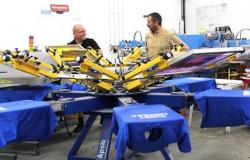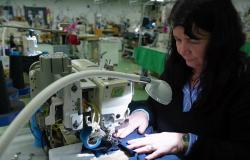Within twenty years, half of the world’s population could be myopic.
The earlier we notice the onset of myopia, the longer we will see better. “Myopia is gaining ground in France and around the world. By 2050, more than 740 million young people could be myopic: half of the world population would therefore be affected” recalls the Krys group in a press release on the occasion of National Myopia Week. We all know the term “myopia” but without always knowing what it refers to. Myopia is “a visual defect that makes distance vision blurry” because of an eye “longer than normal” reminds us of optician Annie Di Méo. The distance from which the blur begins depends on the strength of the myopia.
Myopia can occur from birth until adulthood. “It is often the young child who begins to be myopic” specifies our interlocutor. He will not feel the blur but those around him can realize the consequences of this myopia. They are also the same as in adults. Concretely “he wants to bring things closer to see them and will do things closer and closer” explains Annie Di Méo. When you have the beginnings of myopia, you will bring a book closer to be able to read it. For example, the child will stick his nose to his notebook to be able to write or sit closer to the television to see the images; the student will have to go down to the front rows of the amphitheater if he wants to see his teacher. “The nearsighted also has a tendency to squint to look into the distance.”
What should we do about these behaviors? “When you suspect the beginnings of myopia or distance discomfort, you must consult an ophthalmologist. He will look for the best device to correct myopia: glasses, day lenses or night lenses. The goal is to contain the progression to avoid arriving at excessively strong myopia” replies Annie Di Méo. There is a genetic factor in myopia. Therefore, if one of the two parents is myopic, the child’s vision must be checked from an early age. For information, an optician is not authorized to check eyesight before the age of 16. He needs to see an ophthalmologist.
On a daily basis, in addition to the correction given by the ophthalmologist in case of myopia, it is advisable to have outdoor activities to stimulate distance vision, “it can be a walk to take the dog out, a team sport, a walk in natural daylight, not necessarily every day but as much as possible, for children and adults. Conversely, it Don’t walk while looking at your phone and limit screen time.”advises the optician. The more you stimulate your near vision, the more you increase the risk of myopia.
Health






